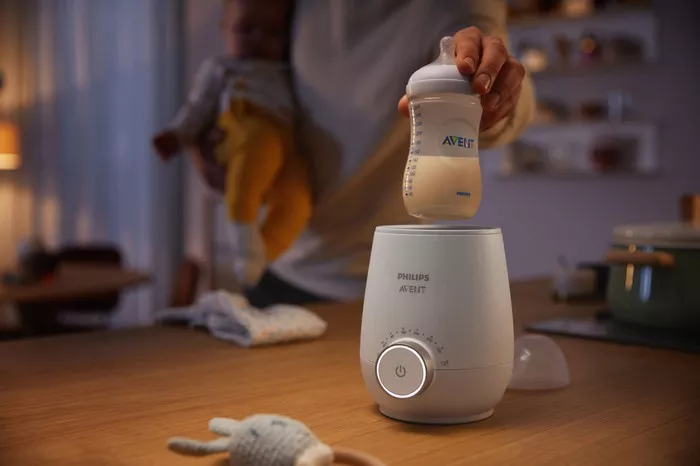When it comes to infant feeding, parents have a multitude of decisions to make, from choosing the right formula to determining the best feeding schedule. One common question that often arises is whether a bottle warmer is a necessary investment. This article aims to provide a comprehensive overview of bottle warmers, their benefits, potential drawbacks, and alternatives, to help parents make an informed decision.
What is a Bottle Warmer?
A bottle warmer is a device designed to heat baby bottles to a specific temperature, typically mimicking the warmth of breast milk directly from the breast. Bottle warmers come in various designs, from electric models to more portable, battery-operated versions. They usually have a reservoir for water, into which the bottle is placed, and the device then heats the water, subsequently warming the bottle’s contents.
Benefits of Using a Bottle Warmer
1. Convenience and Speed
Bottle warmers offer a quick and convenient way to heat milk or formula, often taking only a few minutes. This can be particularly beneficial during nighttime feedings when parents are sleep-deprived and need to feed their baby quickly.
2. Consistent Temperature
Unlike microwaves, which can create hot spots in the milk, bottle warmers heat the milk evenly. This consistency helps ensure that the milk is at an appropriate and safe temperature for the baby.
3. Portability
Many modern bottle warmers are designed to be portable, allowing parents to heat bottles on the go. This feature is particularly useful for traveling or when spending time away from home.
4. Safety
Bottle warmers are generally safer than microwaves, which can overheat the milk and potentially destroy some of its nutritional content. Additionally, using a bottle warmer reduces the risk of burns from overheated milk.
Potential Drawbacks of Bottle Warmers
1. Cost
Bottle warmers can range in price, and for some parents, this added expense may not seem justifiable, especially when considering other household budget constraints.
2. Maintenance
Like any electronic device, bottle warmers require regular cleaning and maintenance to ensure they function correctly and remain hygienic.
3. Dependency
Relying on a bottle warmer can create a dependency, making it challenging to feed the baby when the device is not available. Parents need to be prepared with alternative methods for warming bottles.
Alternatives to Bottle Warmers
1. Warm Water Bath
One of the simplest and most cost-effective alternatives to a bottle warmer is using a warm water bath. This method involves placing the bottle in a container of warm water and allowing it to heat gradually. It requires no special equipment and can be done anywhere with access to warm water.
2. Room Temperature Feeding
Some parents choose to feed their babies milk or formula at room temperature, eliminating the need for warming altogether. While this may not work for all babies, some infants are perfectly content with milk that is not heated.
3. Microwave Heating
Although not generally recommended due to the risk of hot spots, some parents do use microwaves to heat bottles. If choosing this method, it is essential to shake the bottle thoroughly and test the milk’s temperature to ensure it is safe for the baby.
Factors to Consider When Deciding on a Bottle Warmer
1. Feeding Preferences
Consider whether your baby prefers warm milk or if they are content with room temperature feedings. Some babies may have a strong preference, while others may not mind either way.
2. Frequency of Feedings
For parents who frequently need to warm bottles, a bottle warmer can save time and effort. However, for those who only need to warm a bottle occasionally, other methods might be sufficient.
See Also: Are Drop Down Cribs Safe: Everything You Need To Know
3. Lifestyle and Mobility
Families who travel frequently or have busy lifestyles might find the portability of a bottle warmer particularly beneficial. Conversely, parents who spend most of their time at home may not see as much value in a portable device.
4. Budget
Cost is an important consideration. Evaluate whether the benefits of a bottle warmer justify the expense, especially when there are cost-free alternatives available.
Tips for Using a Bottle Warmer Safely
1. Follow Manufacturer Instructions
Always follow the manufacturer’s guidelines for using and cleaning the bottle warmer. This ensures the device functions correctly and remains safe for use.
2. Test the Temperature
Before feeding your baby, test the milk’s temperature by placing a few drops on your wrist. It should feel warm, not hot. This step is crucial to avoid burns.
3. Regular Maintenance
Regularly clean the bottle warmer to prevent any buildup of milk residue or bacteria. Some models may have specific cleaning instructions, so be sure to check the manual.
Conclusion
Deciding whether to invest in a bottle warmer ultimately depends on individual circumstances and preferences. For some parents, the convenience, consistency, and safety offered by a bottle warmer make it a worthwhile purchase. For others, alternative methods such as warm water baths or room temperature feedings may suffice.
In summary, a bottle warmer can be a helpful tool in the infant-feeding arsenal, but it is not an absolute necessity. Consider your baby’s needs, your lifestyle, and your budget when making this decision. By weighing the pros and cons, you can determine the best approach to warming bottles that suits your family.


